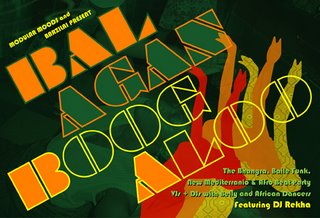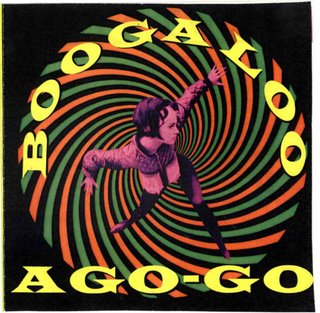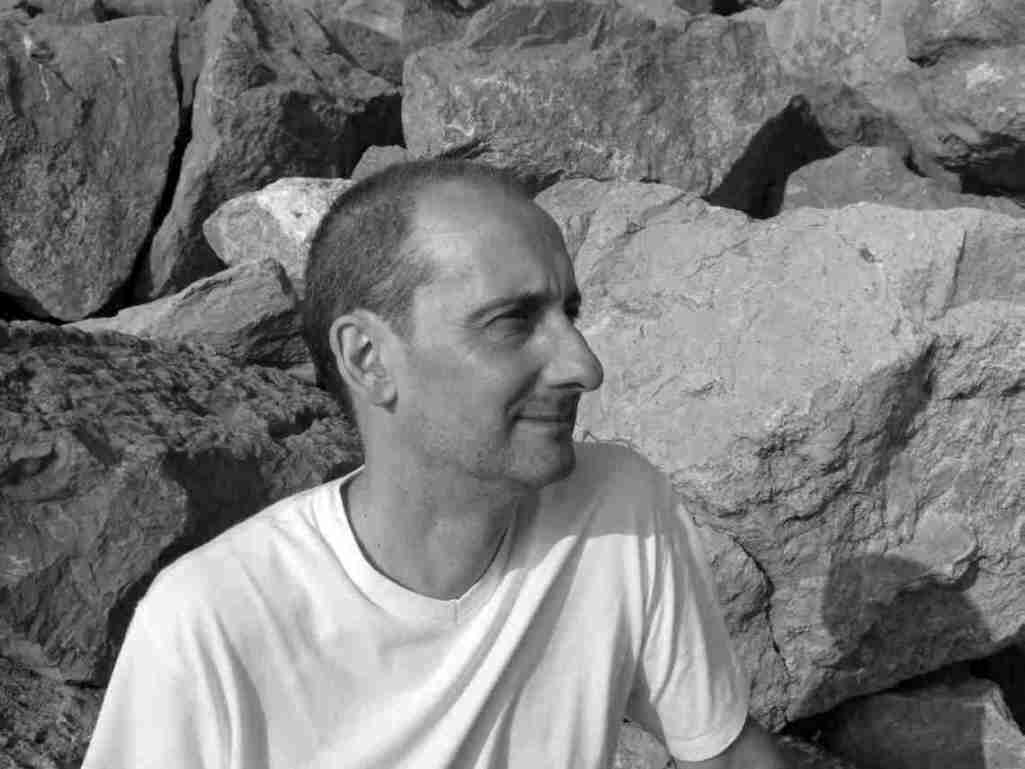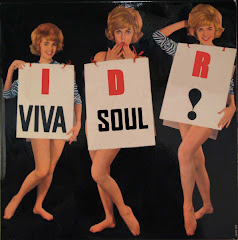 This post was prompted by me picking up a copy of Goldmine's "Chi-Town Boogaloo" CD and got me thinking where and when the dance craze called the Boogaloo first started? A quick Google demonstrated that the Boogaloo still permeates the consciousness of the dance scene across the world with the large number of events using the word and the Boogaloo Invetigators are a major force on the revived funk music circuit. So where did it originate and how did it develop?
This post was prompted by me picking up a copy of Goldmine's "Chi-Town Boogaloo" CD and got me thinking where and when the dance craze called the Boogaloo first started? A quick Google demonstrated that the Boogaloo still permeates the consciousness of the dance scene across the world with the large number of events using the word and the Boogaloo Invetigators are a major force on the revived funk music circuit. So where did it originate and how did it develop? Wikipedia describes how the boogaloo derived from the fusion of African-American, Puerto Rican and Cuban music in the clubs of New York City from the 50's onwards using a mixture of R&B, guajira and guracha music.
Wikipedia describes how the boogaloo derived from the fusion of African-American, Puerto Rican and Cuban music in the clubs of New York City from the 50's onwards using a mixture of R&B, guajira and guracha music. Though originally underground music it seems to have broken out of the clubs with the advent of tracks such as Mongo Santamaria's "Watermelon Man" in 1963 which was a hit in the US. The impact of the hit seems to have popularised the dance.
Though originally underground music it seems to have broken out of the clubs with the advent of tracks such as Mongo Santamaria's "Watermelon Man" in 1963 which was a hit in the US. The impact of the hit seems to have popularised the dance. The boogaloo then seems to have gone through a transmutation and started to crop up everywhere on teen TV shows before embedding itself firmly in both jazz and R&B/Soul music.
The boogaloo then seems to have gone through a transmutation and started to crop up everywhere on teen TV shows before embedding itself firmly in both jazz and R&B/Soul music. The boogaloo appears to have started cropping up in R&B/Soul 45s with the chart success of Tom & Jerry-O's "Boo-ga-loo". There are 3 tracks alone on the Goldmine CD by Jerry-O,
The boogaloo appears to have started cropping up in R&B/Soul 45s with the chart success of Tom & Jerry-O's "Boo-ga-loo". There are 3 tracks alone on the Goldmine CD by Jerry-O,A.C. Reed and Lewise Bethune which use the phrase. By the mid-60s, the use of the word seems to have even broadened out to be used on pop records such as Sandy Nelson's album, which was obviously cashing on what was assumed to be a cool term in the same way "discotheque" and "go-go" had been appropriated by big business in the 60's to sell records.
 It would certainly make an interesting study of dance crazes and their origins; how big business and the media manipulated the use of the words and how the words were later transformed by other music scenes. "Go-Go" was used by the Washington black music scene in the early 80's and now the hip hop scene has adapted the meaning of boogaloo for it's own devices.
It would certainly make an interesting study of dance crazes and their origins; how big business and the media manipulated the use of the words and how the words were later transformed by other music scenes. "Go-Go" was used by the Washington black music scene in the early 80's and now the hip hop scene has adapted the meaning of boogaloo for it's own devices.
 I would love to start by listing all the R&B/Soul 45s which use the word boogaloo - perhaps one day!
I would love to start by listing all the R&B/Soul 45s which use the word boogaloo - perhaps one day! The track I have used to capture the style and how it affected soul music is to go for a later Mongo Santamaria 45 "The Now Generation". The title itself gives an indication of the desire for the music to be hip and continues the idea of Dobie Gray's "The In Crowd". I certainly think there's an opportunity for a thesis here!!! The music will always remain firmly in it's Latin roots with a raw excitement driven by a pulsating beat which harks back to the early Cuban influences of the early 50's in NY.
The track I have used to capture the style and how it affected soul music is to go for a later Mongo Santamaria 45 "The Now Generation". The title itself gives an indication of the desire for the music to be hip and continues the idea of Dobie Gray's "The In Crowd". I certainly think there's an opportunity for a thesis here!!! The music will always remain firmly in it's Latin roots with a raw excitement driven by a pulsating beat which harks back to the early Cuban influences of the early 50's in NY.
"Boogalu, Boogalu!!!!!!!!!!"





















prauls.jpg)
























What I would really like to read about is American Black clubs in the 1960's. Having listened to many uptempo 'Northern Soul' records over the years, I have often been puzzled as to what audience these records were originally aimed at? Was someone, somewhere in the '60s dancing to Larry Williams & Johnny Watson's "Too Late" (OKEH), or Jackie Lee's "Oh My Darlin" on MIRWOOD etc.?
ReplyDeleteWhere were these discotheques, if they existed? I understand that live acts were the primary source of entertainment, but such records were not made for radio play alone, surely? Anyone out there know?
Hi Dave
ReplyDeleteI consistently find in interviews that artists did not perform tracks they recorded as part of their stage shows.
Most hoped to gain radio play then juke box play which probably meant far bigger sales than say discos which were probably more associated with larger cities particular in 60's and only spread in 70's and led to the demise of the small club circuit.
The small club circuit was the major source of work for most soul performers who were making a living through music or extra monies on top of the day job/college. The patrons of these clubs would demand to hear the hits of the day so many artists wouldn't or couldn't play their own recordings. Some would also sell 45s of their current releases at these clubs as well because some times artists only received vinyl in lieu of payments by record label owners.
I would say that the records you mentioned were primarily aimed at radio play because this was the dominant means for potential buyers to hear product. The soul market was predominately a 45 market. The size of the regional/city markets meant you could have a good seller with sufficient exposure in a few large/medium size markets.
It would be simplistic to say that you could take all 60's soul records and break them down into categories but you could say record makers went for a Motown/James Brown/Stax feel because they were successful.
However, it would be interesting to explore whether there was a "soul disco" scene in the 60's were DJ's played records to dance to - I will ask some freinds about this.
You may also get a response on raising the issue on say Soulful Detroit.
Cheers
Colin
the boogaloo man was Jerry-o,I saw him on a local dance show here in detroit,Robin seymour's Swingin Time,wow was he a heck of a dancer.I wish someone would tell Robin to DvD those shows and sell them.I found a cd"The boogaloo years"by Jery-o on amazon.com.Peace Tony
ReplyDelete